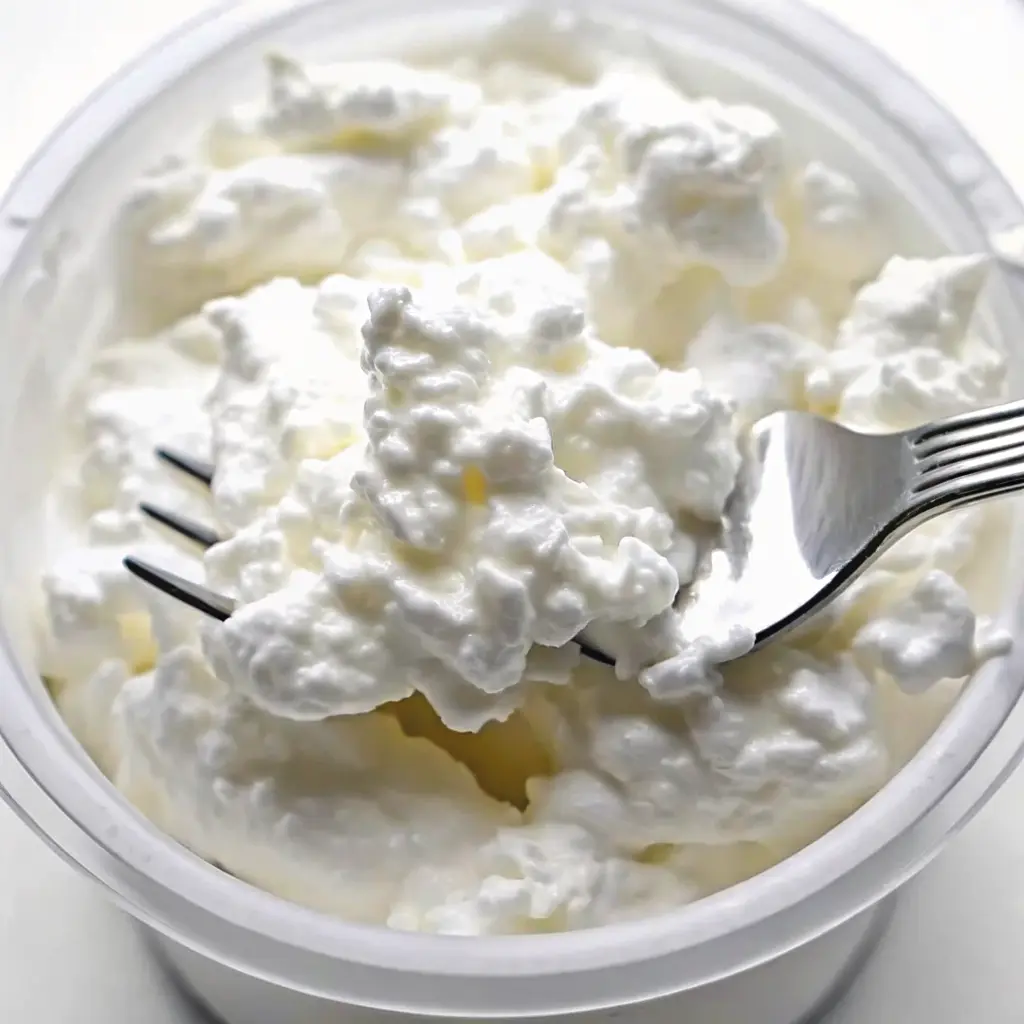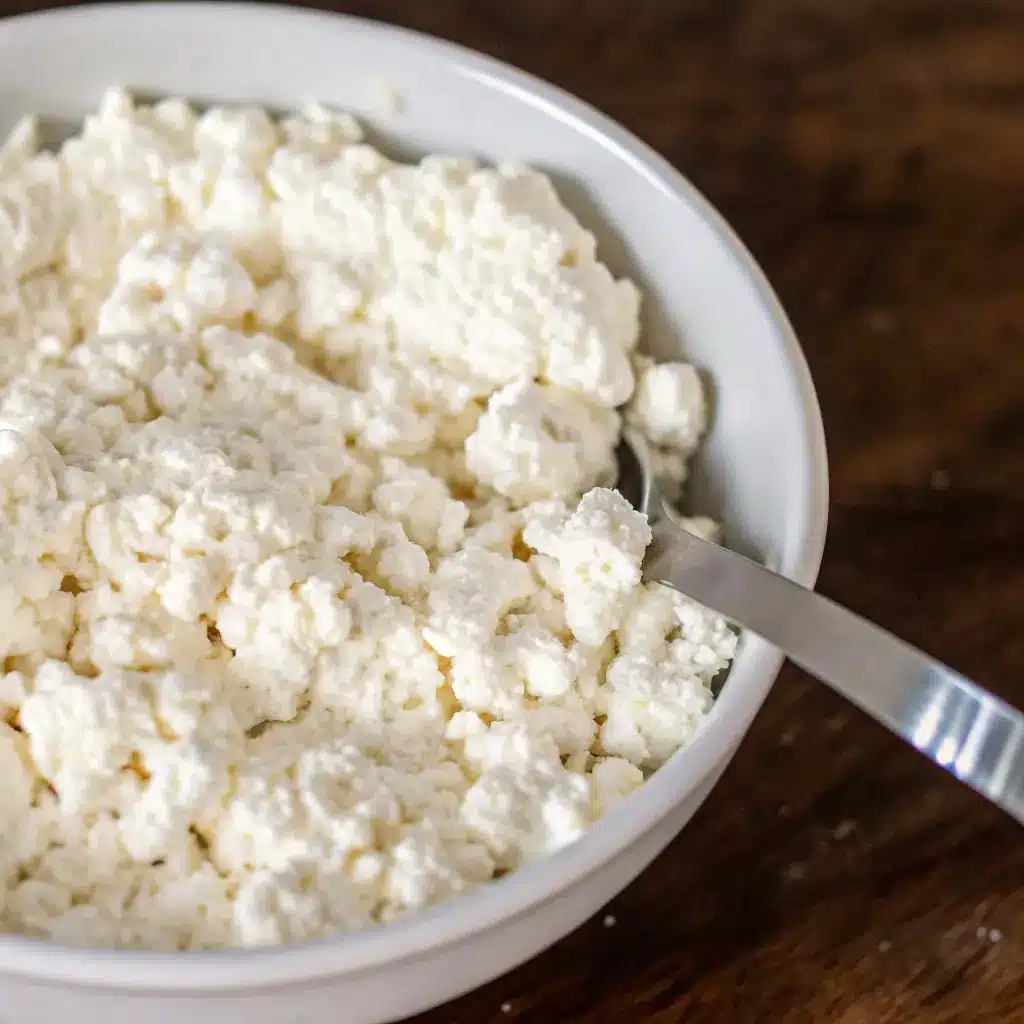Low fat cottage cheese has quietly become a go-to ingredient in kitchens all across America, and for good reason. It’s packed with protein, low in fat, and versatile enough for breakfast, snacks, or savory dinners. In this article, we’ll explore what makes low fat cottage cheese a smart choice, how it stacks up against 2% and 4% versions, and whether it really deserves a spot in your healthy routine. You’ll get the full scoop on calories, inflammation myths, and how to enjoy it deliciously. Whether you’re cutting calories or boosting protein, this guide will help you use low fat cottage cheese the right way.
Table of Contents
Table of Contents
For more follow me on Facebook & Pinterest

Why I Love This Lighter Dairy Staple
Grandma’s Kitchen & Protein-Packed Memories
I still remember the hum of my grandmother’s fridge—right next to the eggs and jam jars, there was always a tub of cottage cheese. Back then, it was full-fat, rich, and creamy. But as I started cooking for my own family, I found myself reaching for something lighter. That’s when I discovered low fat cottage cheese—and it quickly became one of my kitchen essentials.
Low fat cottage cheese isn’t just “diet food.” It’s satisfying, creamy, and surprisingly adaptable. You can stir it into scrambled eggs, blend it into pancakes, or dollop it on toast with fresh tomatoes. And the best part? It’s loaded with protein without loading on calories.
Why It’s a Weekly Fridge Staple
I always keep it in my fridge because a half-cup serving gives me around 12–14 grams of protein for under 100 calories. That’s a win, especially when I’m short on time and need something filling. It’s naturally low in sugar and carbs, making it an easy match for many eating styles.
It also stars in several recipes on my blog, like this cottage cheese pizza crust or cottage cheese smoothie—easy and protein-rich meals that come together fast.
Health Benefits of Low Fat Cottage Cheese
Is Low Fat Cottage Cheese Healthy?
Absolutely—and there’s real science to back that up. Low fat cottage cheese is a nutrient-dense option rich in casein protein, which digests slowly and keeps you full longer. It’s also loaded with essential nutrients like calcium, phosphorus, and B vitamins, which support everything from energy production to bone health.
What sets it apart from higher-fat cheeses is its lean profile. While still creamy and satisfying, it contains less saturated fat and cholesterol—two things most people are trying to limit. According to recent research from the NIH, moderate consumption of dairy, especially low-fat types, is linked with improved metabolic markers and better long-term health outcomes.
If you’re managing your weight, low fat cottage cheese helps you stay on track without sacrificing satisfaction. A typical half-cup serving has under 100 calories, less than 5 grams of carbs, and over 12 grams of protein—making it ideal for low-carb, high-protein diets.
Protein, Probiotics, and Bone Health: What Science Says
Low fat cottage cheese is one of the best whole food sources of casein protein, especially if you’re looking for something to support muscle repair and curb hunger. That slow-digesting protein works overnight, which is why many people eat it as a bedtime snack.
Some brands, like Good Culture’s 2% version, even include live probiotic cultures. That makes this dairy option a bonus for gut health. You’ll also benefit from its calcium and phosphorus content—key minerals for strong bones and teeth.
Looking for a savory way to enjoy it? Try this egg and cottage cheese bake. It’s comforting, filling, and makes good use of this light but powerful ingredient.

Comparing 2%, 4%, and Fat-Free Options
Which is Better: 2% or 4% Cottage Cheese?
When choosing between 2% and 4%, it all comes down to your goals and taste preference. Both versions offer similar protein content—usually around 13 grams per half-cup—but the difference lies in fat and calorie counts. While 2% is considered low fat cottage cheese, 4% is regular or “full-fat,” with a creamier texture and richer flavor.
The 2% version is lighter, typically ranging from 90 to 110 calories per serving with about 2.5 grams of fat. It’s a great pick if you’re trying to reduce saturated fat or maintain a calorie deficit. On the other hand, 4% cottage cheese has a slightly higher fat content (around 5 grams), giving it a smoother mouthfeel that some people prefer—especially in savory dishes or dips.
From a nutritional perspective, both are solid choices. If you’re focused on heart health or weight control, low fat cottage cheese at 2% offers the same protein with fewer calories. You can use it in creamy recipes without missing the richness.
How Fat Content Affects Texture, Flavor, and Nutrition
Fat doesn’t just impact nutrition—it changes how cottage cheese feels and tastes. Full-fat versions are thicker and less tangy, while low fat cottage cheese is usually more crumbly and slightly sharper in flavor. Fat-free versions, though even lower in calories, can taste dry and often need a flavor boost from herbs, fruit, or seasoning.
That’s why 2% is such a popular middle ground. It’s versatile enough for sweet or savory uses—perfect in a smoothie or stirred into eggs.
So, which one’s better? If you’re after taste and texture, 4% may win. But for everyday meals that balance health and flavor, low fat cottage cheese at 2% gives you the best of both worlds.
Calories, Inflammation & Smart Usage
How Many Calories in ½ Cup of Low Fat Cottage Cheese?
If you’re watching calories, you’ll be happy to know that a standard ½ cup serving of low fat cottage cheese typically contains between 80 and 100 calories. It’s also a smart substitute in recipes. Want to cut calories in creamy dishes? Swap in cottage cheese for sour cream—it works beautifully.
Despite its creamy texture, it’s actually one of the most calorie-efficient dairy choices. What makes it special is the high protein-to-calorie ratio. With around 12 to 14 grams of protein per serving and only a modest amount of fat, low fat cottage cheese fills you up without tipping your daily count too high.
It’s also a smart substitute in recipes. Want to cut calories in your baked dishes or creamy dips? Swap in this ingredient for sour cream or heavy cream.
Is It Inflammatory or Gut-Friendly? The Truth Revealed
There’s been some debate about whether dairy causes inflammation. The truth? For most healthy individuals, moderate dairy intake—especially low fat options—is not inflammatory. In fact, it may even help reduce certain markers of inflammation, according to research from clinical studies on dairy and metabolic health.
Of course, if you’re lactose intolerant or sensitive to casein, it’s best to choose lactose-free cottage cheese or consult with your doctor. But for the majority of people, this food can support gut health, especially when cultured varieties are chosen. Some brands add live and active cultures, making them beneficial for digestion and overall gut balance.
If you’re sensitive to dairy, dairy-free cottage cheese might be a better fit, letting you enjoy similar benefits without discomfort.

Low Fat Cottage Cheese: Healthy, Tasty & Full of Protein Benefits
Ingredients
Method
- 1. Add cottage cheese to a small mixing bowl.
- 2. Fold in diced cucumber, dill, salt, and pepper.
- 3. Stir gently until well combined.
- 4. Serve immediately or chill for 10 minutes.
Nutrition
Notes
Tried this recipe?
Let us know how it was!FAQs About Low fat cottage cheese
Is low-fat cottage cheese healthy?
Yes, low fat cottage cheese is a healthy option for most people. It’s rich in protein, low in calories, and provides key nutrients like calcium, B vitamins, and phosphorus. When included in a balanced diet, it supports muscle maintenance, bone strength, and even weight management.
Which is better, 2% or 4% cottage cheese?
Both are nutritious, but 2% is considered low fat cottage cheese and contains fewer calories and less saturated fat. If you’re focused on weight loss or heart health, 2% is often the better option. However, 4% offers a creamier texture and may be preferred in richer dishes.
How many calories are in 1/2 cup of low fat cottage cheese?
A ½ cup serving typically contains between 80 and 100 calories, depending on the brand and exact fat percentage. It also delivers about 12 to 14 grams of protein, making it a satisfying, low-calorie snack or ingredient in many recipes.
Is low-fat cottage cheese an inflammatory food?
For most people, it is not. Low fat cottage cheese does not cause inflammation and may even help lower certain inflammatory markers when consumed as part of a balanced diet. Those with lactose intolerance or dairy sensitivities should choose lactose-free options to avoid digestive issues.
Conclusion
Low fat cottage cheese is more than just a diet food, it’s a versatile, protein-packed ingredient that fits easily into everyday meals. Whether you’re aiming to eat healthier, manage your weight, or simply want an easy way to get more protein, this dairy staple delivers. Try it in your favorite sweet or savory recipes, and don’t be surprised if it becomes a regular in your fridge too.
